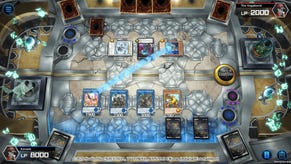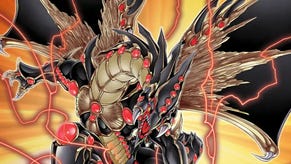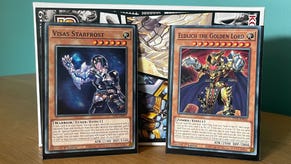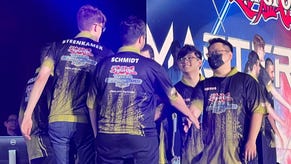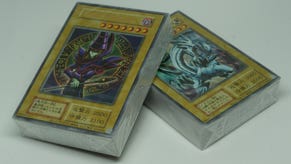The best decks in the Yu-Gi-Oh! anime you should play for real
Looking back on the decks and cards that leapt from cartoon to cardboard as the series celebrates its 25th anniversary.
The Yu-Gi-Oh! TCG is entering its 25th anniversary year in 2024, causing many fans to reminisce about their favourite moments and cards from the franchise’s storied history. You see this in the products being released within the TCG as classic packs are reprinted and the Legendary Collection and 25th Anniversary tins put nostalgia at their core. There are many callbacks these sets have to the manga and anime that started it all, and all the best decks from the original Yu-Gi-Oh! anime are present and accounted for.
Many fans are recalling their memories of the original story by the late Kazuki Takahashi, and how their excitement for Seto Kaiba and Yugi Moto’s intense rivalry in a millennia-spanning adventure developed into the worldwide phenomenon we know and love today. By many fans that includes us, too. We remember taking our Dark Magician into battle, and we’ll find any excuse to bring these classic cards back into action when it comes time to d-d-d-duel.
Beyond a simple desire to emulate our heroes, some of the decks featured within the original series have seen success in real-world tournaments that made these dreams a reality. For that, we wanted to run through a few decks that have found success following their jump from the page and screen to card shops around the world.
Dark Magician
Black Magic has its perks

There’s something to be said about how the protagonists in Yu-Gi-Oh! never seem to wield the decks that reach the summit of the game’s most prestigious tournaments, failing to find success when the heart of the cards and convenient screenwriting can’t compel them to victory. Just as we noted when discussing Jaden Yuki’s GX Elemental Heroes, competitive glory for Yugi’s Dark Magician came more from their support following the anime’s conclusion than it found when used in the format seen in the original anime.
Looking back at the early days of competitive Yu-Gi-Oh!, one criticism that could be levied against the TCG is its distinct lack of strategic archetypal design seen in the modern game. Even when cards were clearly thematically linked - as seen with Dark Magician and Dark Magician Girl - their effects would not interact in a way that incentivised players to use them together, this lack of synergy holding them back from success.
Of course, we could also note the liberal adherence to the rules that propelled Yugi to victory in many of his duels as a reason for his success failing to materialise in the real world. Imagine what would have happened if Magical Hats or many other cards functioned in the anime the way they function in real life?
Still, over time, this love for Dark Magician incentivised Konami to make a Dark Magician archetype a reality to help the card keep up with the increasing pace of the modern game. The Eye of Timaeus were designed to make it easier to summon Dark Magician Fusion monsters, Dark Magic Inheritance improved searching and consistency for the deck, while plenty of other cards were designed simply to make this archetype viable in a competitive format. Did they succeed? Although the deck never reached the highest echelons of competitive play, it has its fans, and at least won’t crumple to defeat in a duel. Not bad for a card older than many players.
Blue-Eyes White Dragon
A Champion with eyes of blue

Blue-Eyes White Dragon has seen much more tournament success than Dark Magician ever saw since Konami gave it a similar treatment in an attempt to make everyone’s favourite deplorable billionaire a competitive duelist in the real world.
One advantage the card always had was its strength. In the case of Blue-Eyes White Dragon, the card was used ever since its initial release as one of the strongest monsters in the game in terms of sheer attacking force. When few monsters had effects of their own in the early 2000s, being able to wield 3000 ATK was a significant advantage.
When archetype support for the monster followed to help the card keep up in a post-GX, speedier duelling environment, the deck only grew from strength to strength. White Stone of Legend made bringing the titular monster out of the deck trivial, while Tuners made it easy for Synchros. Most of all, the game’s already-plentiful generic support for Dragon cards via the likes of Super Rejuvenation and Dragon Ravine gave it a natural advantage over its spellcasting rival.
By the mid-2010s, Blue-Eyes was winning events, and this now-15-year-old card had grown to become one of the best decks in the game. It even managed to win the World Championships in 2016, when Japanese duelist Hiyama Shunsuke beat American Erik Christensen in a mirror match in the finals. Not bad for an old-timer.
Exodia
Patience is the key
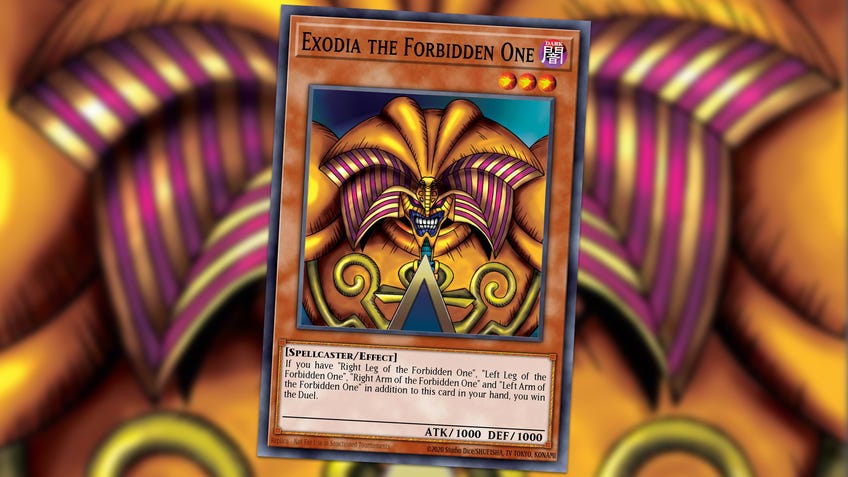
Cast your mind back to the very first episode of Yu-Gi-Oh! and Yugi’s duel with Kaiba. Just when all hope seems lost as the Pharaoh stares down three Blue-Eyes White Dragon monsters on Kaiba’s field, we learn about the true strength of his Grandfather’s old deck. This deck has no pathetic cards. It has Exodia, the Forbidden One.
And then Weevil Underwood threw them all into the ocean. How mean.
Ever since its release, people have wanted to turn Exodia into a match-winning formula. It’s one of the only legal alternative win conditions remaining in Yu-Gi-Oh! today and remains unique for how it automatically grants a player victory provided they can possess all pieces of Exodia in their hand at the same time. Being limited to one copy per deck definitely makes it more difficult to achieve this win condition, but it’s also far from impossible. And duelists have done everything in their power to optimise their draw power in order to win using this legendary card.
Exodia has never been the best deck in the format, but ever since its release the deck has persevered as a rogue choice for duelists looking for the element of surprise against an unsuspecting opponent. While rare, you’ll sometimes hear of the card topping a major tournament, and in 2012 the deck even made it into Top 8 at the World Championships, the grandest stage of them all. It may not Obliterate, but it will certainly pose a threat.
Gadgets
You’re never too old to tinker with toys
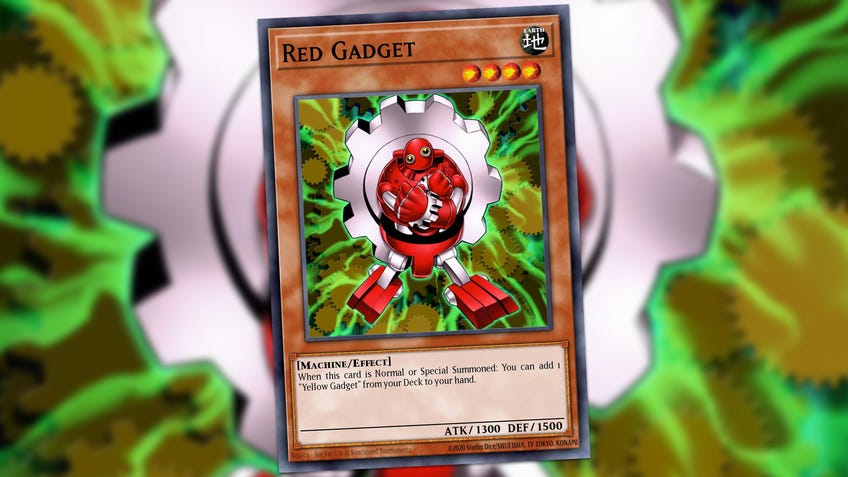
For as iconic as the Gadget monsters are today, you wouldn’t think their first appearance in the original Yu-Gi-Oh! anime came at the very end, in the final ceremonial duel between the Pharaoh and Yugi.
The concept behind the Gadgets is simple: summon one, and you can grab another, different Gadget from your deck and add it to your hand. It’s a simple concept, but one that’s endured ever since they made their TCG debut in 2007. They weren’t overwhelming the competition at that time, but they were no easy victory either, often holding at least some presence in the meta as a worthy anti-meta pick for those talented players willing to give it a shot.
Gadgets topped some of their very first events in 2007 thanks to the consistency and card advantage the deck naturally offered thanks to each monster’s search ability. Coupled with generic machine support like Limiter Removal and monsters like Cyber Dragon, this deck could easily counter some of the peskier decks in the format at the time. Throw Xyz monsters into the mix and things soon got even scarier for opponents to deal with.
Eventually age proved to be the deck’s downfall. Cards that introduced instant Special Summons like Gold Gadget helped the deck maintain some relevance in the metagame, but by this point the deck had been eclipsed by other machine archetypes that were simply faster and more effective. Why wait another turn to summon your next gadget when other decks could flood the field with multiple monsters in a single turn?
Looking back on the original Yu-Gi-Oh! anime and the decks it spawned, it’s a series notable more for its nostalgic, memorable storylines and many iconic cards and moments, rather than spawning new archetypes that would come to define this early era of the Yu-Gi-Oh! TCG. Much of this comes down to how the game was designed in these early years: archetypes were less of a consideration when the anime was at its peak, with such ideas only really coming about later as the game evolved and became more strategic.
That being said, many cards from this era would later go on to define the meta, while others remain staple cards for any duelist to hold in their repertoire (or have since been banned for being too powerful). Cards like Pot of Greed, Harpie’s Feather Duster, Raigeki and more are either banned or serve as powerful, momentum-changing moves that duelists can wield and utilise at any time to turn the tide of battle. Joey Wheeler’s Scapegoat was the cornerstone of GOAT Format, an era of Yu-Gi-Oh! so beloved that many duelists willingly return to the ban list and card selection of that period simply to relive it. The list goes on.
Besides, so what if these cards aren’t competitive? They’re beloved for the memories associated with them, not their perceived strength. People love Kuriboh, but you won’t see that furball topping events any time soon. The original manga and anime spawned many of the most beloved cards in Yu-Gi-Oh! history and remains both an introductory point to the franchise and an inspiration for duelists today. People still want these cards, as their endless reprints demonstrate. Who says we need to be competitive, as long as we’re having fun?




